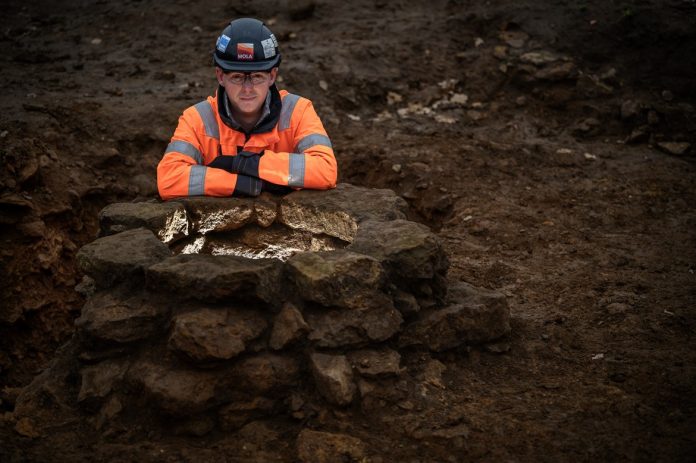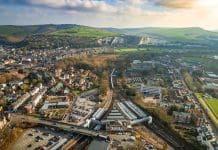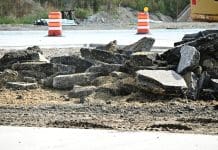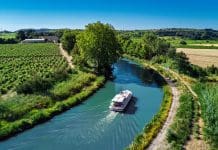HS2 archaeologists have uncovered a wealthy Roman trading settlement near a village in South Northamptonshire
Over the past twelve months, a team of around 80 archaeologists from MOLA Headland Infrastructure have been excavating an Iron Age village, which developed into a wealthy Roman trading settlement.
The presence of an archaeological site in the area has been known since the 18th century, however, the scale and quality of the discoveries on site have surpassed expectations.
The original use of the settlement began in the Iron Age, when it was a village formed of over 30 roundhouses, which have been uncovered alongside an Iron Age road.
Evidence from the dig shows that the settlement expanded over time becoming more prosperous during the Roman period, with new stone buildings and new roads emerging.
A 10m wide Roman road runs through the site, and indicates that the settlement would have originally been used to load and unload goods.
The wealth of the settlement is likely to have been based on trade, both from the nearby River Cherwell and via the Roman road.
Over 300 Roman coins, discovered as if lost or discarded, have been recovered, an indication that a significant volume of commerce was passing through this area.
The layout of the site indicates that the settlement was split into multiple areas, with foundations uncovered of buildings used for domestic purposes, as well as more industrial practises.
The site would have originally been a busy area, shown through the evidence of workshops, kilns, and several preserved wells, uncovered by HS2 archaeologists.
In one area of the site, the earth has been preserved with a red colour, indicating that the area would have been used for activities involving burning, such as bread making, foundries for metal work, or a pottery kiln.
‘Transform our understanding of the Roman landscape in the region and beyond’
James West, MOLA site manager said: “This is certainly one of the most impressive sites MOLA Headland Infrastructure has discovered whilst working on the HS2 scheme.
“A particular highlight for me has been understanding the emerging story of Blackgrounds, which we now know spans multiple time periods.
“Uncovering such a well-preserved and large Roman road, as well as so many high quality finds has been extraordinary and tells us so much about the people who lived here. The site really does have the potential to transform our understanding of the Roman landscape in the region and beyond.”
Alongside coinage, the wealth of the settlement’s inhabitants can be seen in the finds uncovered during the dig.
Items such as glass vessels, decorative pottery, jewellery and evidence of make-up have also been found.
Half a set of shackles, similar to those recently found at an excavation in Rutland have also been found, which are believed to be associated with criminal activity or slave labour.
‘Unprecedented discoveries’
Mike Court, lead archaeologist for HS2, commented: “As we near the end of our archaeological field work between London and Birmingham, we have made some unprecedented discoveries, which we will continue to share with communities near our works.
“The opportunity to carefully examine a site such as Blackgrounds, and map out a long history of the site, brought to life through artefacts, building remains and roads, has enabled us to provide a more in depth understanding of what life was like in rural South Northamptonshire in the Iron and Roman Age.”








![[VIDEO] Two key HS2 viaducts completed over Christmas Image of the two HS2 viaducts completed over Christmas](https://www.pbctoday.co.uk/news/wp-content/uploads/2026/01/20251227_HS2-Water-Orton-1-and-2-viaducts-over-the-Birmingham-to-Nuneaton-line-27-218x150.jpg)


![[VIDEO] HS2 completes 4,600-tonne viaduct slide across M6 The HS2 team completed a 17-hour long operation sliding the viaduct structure across the M6 without closing the motorway](https://www.pbctoday.co.uk/news/wp-content/uploads/2025/12/M6-South-viaduct-slide-taking-place-across-a-live-motorway-December-2025-218x150.jpg)


